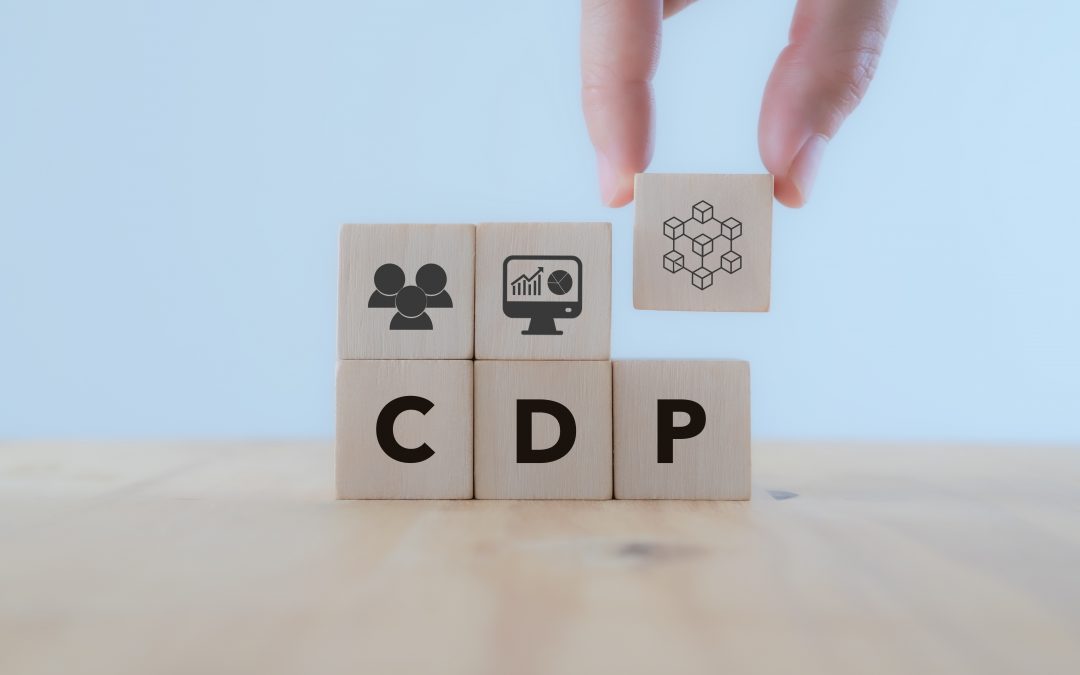A customers’ purchase journey today is rarely linear. Users are gathering information, stating preferences, comparing products, providing feedback and purchasing services across channels – both online and offline. Every one of these touch-points can help marketers learn more about their users and reach them where they are, and with a message personalized for them. On the face of it, this may sound like any marketer’s dreamscape. But in the reality of today’s privacy-first world, even some of the biggest brands have been struggling with being able to fully harness the power of their first-party data.
Marketers need to understand and invest in the right tech enablers that will help them get a 360, unified view of their customers across channels. This is where Customer Data Platforms (CDPs) come to play – they enable you to personalize at scale and help reach your first-party data goals.
1. What is a Customer Data Platform (CDP)?
According to the CDP Institute, a Customer Data Platform is a “packaged software that creates a persistent, unified customer database that is accessible to other systems.” A CDP is a complete customer database solution capable of taking in data from a wide variety of sources, creating customer profiles/segments (that remain in the system to be augmented over time) and activating these segments across channels. The best Customer Data Platforms (CDPs) help you activate data across first-, second- and third-party sources – your CRM, website clicks, online form fills, email opens, social media engagement and even offline/in-store interactions.
2. Features of Customer Data Platforms (CDPs)
CDPs enable the creation of a centralized customer database that presents nearly endless customer segmentation and personalization possibilities for marketers. Some of the core features of CDPs include:
- Data collection and ingestion
- Privacy compliance
- Identity resolution and cross-device data coordination
- Customer journey mapping
- Creation of a singular view of the customer
- Customer data analytics
- Audience segmentation and customisation
- Digital campaign and web personalization
3. Why a Customer Data Platform (CDP)?
We have often been asked – “Can digital marketing campaigns be built in the absence of CDPs? Can marketers do without a CDP?” The more apt question to ask here is whether these be as impactful as the hyper-personalized digital marketing programs powered by CDPs? And the answer is simple: NO. Customer Data Platforms offer significant advantages to marketers, which make them indispensable in an effective first-party data strategy. Some core benefits highlighted below:
- Data unification to build a single view of the customer: The primary function of a CDP is to collect and input data from any online and offline data sources using connectors. After the data ingestion, a CDP cleans and unifies all the data using its identity resolution capabilities.
- Improved customer communication and targeting resulting in better business performance: Using a CDP directly translates into improved personalisation capabilities for a marketer’s website and campaigns. This clubbed with its activation capabilities helps improve the messaging for prospects across touch points, resulting in better engagement and better business performance.
- Ease of managing data privacy and compliance requirements: CDPs also come in with in-built privacy compliance and consent management capabilities. Using these features of a CDP, marketers can easily exclude non-consenting users from their marketing campaigns and measurement efforts, making compliance easier for them.
4. CDPs vs. DMPs: Can I still use a DMP instead of a CDP?
The choice to use a Data Management Platform (DMP) or a Customer Data Platform (CDP) depends on what data a marketer plans to use and how you plan to use it.
DMPs collect and manage large, anonymized data sets of audiences – sometimes based on own users, and more often based on purchased third-party data. DMPs are used for audience build in advertising. Facebook, for example aggregates data about its vast user base, anonymizes it and sells it to advertisers, and is a great example of a DMP in action. CDPs on the other hand enables you to share your customer data across your tech stack, powering personalization across your channels.
Let’s take a closer look at both below:
- DMPs are cookie-reliant and can’t store PII (Personally Identifiable Information): By the nature of their build, DMPs are cookie based and do not enable ingestion of any PII data. This gives CDPs an edge over DMPs, as marketers can ingest data in a CDP from any source and it supports all types of PII and non-cookie-based data.
- DMPs can’t unify profiles or help differentiate customers: DMPs club users or cookies based on their traits and enable marketers to create rule-based segments for activation, while CDPs unify the profile of each user separately using its capabilities, helping marketers differentiate its customers.
- Lesser data retention: CDPs enable ingestion of PII and non-cookie-based data whose lifecycle is much more than that of cookies (the primary source of data for DMPs), making data retention cycle shorter with DMPs.
- Can’t be used for email or web personalization: Activation channels of a DMP mainly consist of Demand Side Platforms (DSSPs) for running paid digital marketing campaigns, making it a limitation for them to activate the most relevant audiences to email or web personalization engines.
5. Are there any alternatives to a Customer Data Platform (CDP)?
Since CDPs are designed to help marketers do multiple tasks of business relevance without too much effort, it’s not easy to replace a CDP with any alternate single platform.
However, looking at their unique business needs and use cases, marketers can onboard a combination of multiple other MarTech platforms in their stack and use those platforms to replicate a CDP’s capabilities. For example, identity platforms can be used for profile unification and consent management platforms for managing user consent.
While going ahead with this alternative, marketers should also keep an eye on the budgets each of these platforms consume, as they might turn out to be much more expensive than investing in onboarding a CDP.
THE FINAL WORD
CDPs are leading the MarTech discussion across industries because of their relevance in this time of turmoil in the digital marketing space. While it is important to look for alternate approaches to minimize the impact of cookie decay on your business, this is also the time to start testing out these approaches to stay ahead of the curve in the post-cookie world.
Brands need to invest in understanding their unique data requirements, investigating the solutions and weigh their options soon to start their journey.
With our deep understanding of consumers, data, technology and platforms, iQuanti has been leading clients through this transition – helping understand their unique data requirements in the changing times, investigating solutions on their behalf and optimizing organizational processes to help with the transition.
Keep an eye out for our latest articles on this topic and reach out to us to start a conversation today!




